Federalist Propaganda in the 2nd American Civil War portraying they every growing bond between the United States and the Russian Republic both nations had there respective democracies created in the fires of revolution and the chaos of there respective civil wars (they romanticized the American and February Revolutions) after the 2nd American Civil War US President Quentin Rossevelt makes a symbolic trip to Moscow where they met with Russian President Victor Chernov to sign the Treaty of Friendship the two nations along with the recreated Republic of China joined the Entente while also convincing Mittleuropa/Reichpact to form a united front with the entente against a increasingly totalist Internationale and the Nat-Pop Co-Prosperity sphere.
You are using an out of date browser. It may not display this or other websites correctly.
You should upgrade or use an alternative browser.
You should upgrade or use an alternative browser.
Photos of the Kaiserreich
- Thread starter pattontank12
- Start date

Egyptian troops walk past abandoned Ottoman armor on the Sinai Peninsula during Operation Prophet. It was a rousing success that broke the stalemate on the Suez leading to Ottoman troops pulling back to the Kemal Line anchored around Jerusalem.
Saudi troops advance around Mecca. Not wanting to see the Holy City damaged by fighting the Ottomans pulled their men into the area around the city where they put up a stiff resistance to Saudi forces until the very end of the War.
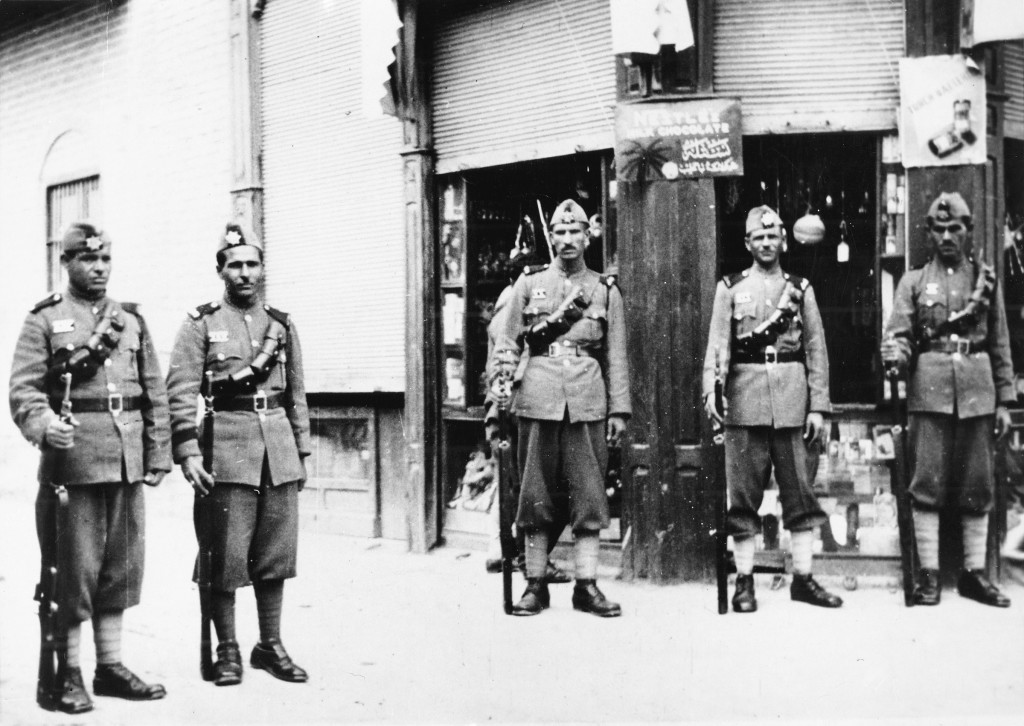
Iranian forces stand guard in Baghdad after Ottoman forces fled the city in diseray. Already pushed hard by Egyptian forces in the Levant and Saudi forces in Hejaz and Mesopotamia the Ottoman response to the sudden Iranian invasion was disorganized and panicked as forces were forced to be redirected from theater to theater leaving the Ottoman Army, already demoralized by their near defeat in the Weltkrieg and the Kurdish Revolt, in a state of total collapse.
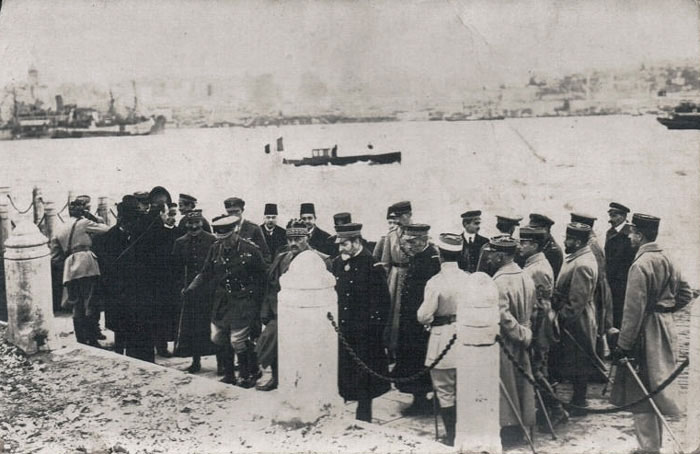
The Final Insult. With her armies in disseray in the Middle East Bulgaria pounced on the weakened Ottoman Empire and demanded control of Thrace on Istanbul or face war on yet another front. The Sultan, already morose over the rapid collapse of his Empire accepted immedeatly and was greeted four days later by the 1st Tsargrad Division, the first Bulgarian troops to enter the city, who escorted him out of the city and proclaimed him and his descendants banned from ever returning. The Sultan would commit suicide sometime on the road to Ankara. With its land parceled between numerous powers the Provisional Government of the Turkish Republic is set up in a bloodless revolution in Ankara who then sign the Declaration of 1940 formally revoking their control of Thrace, Tsargrad and the Middle East. Turkey would never recover and still suffers from uncountable numbers of coups and counter coups.
Deleted member 107125
Some India photos from my KR India timeline.
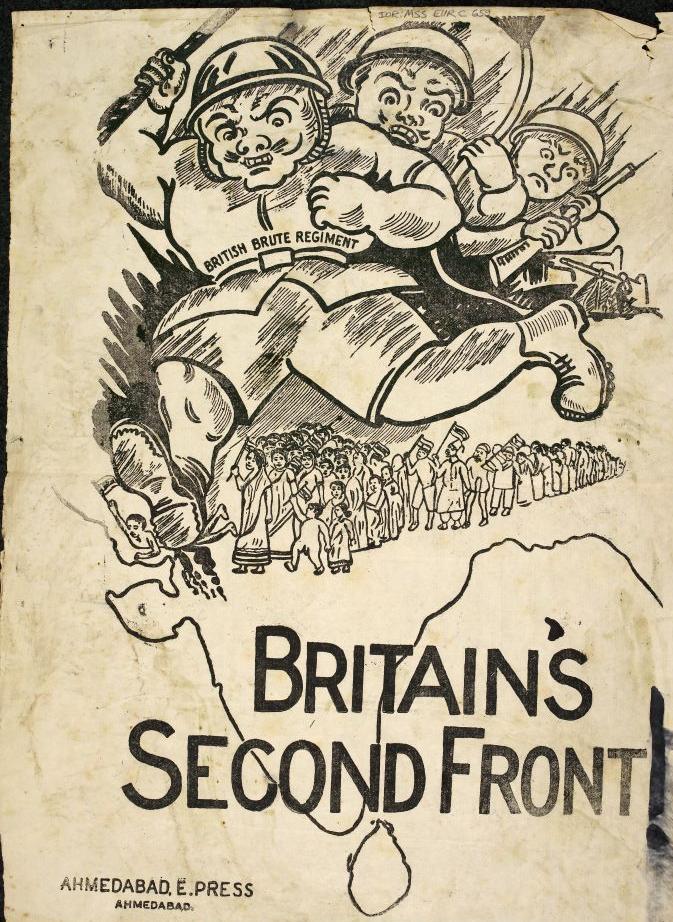
Syndicalist poster depicting Britain (Canada) as a warmongering,brutish nation.This was from Nehru's Industrialist faction.

Entente poster from the Indian Civil War
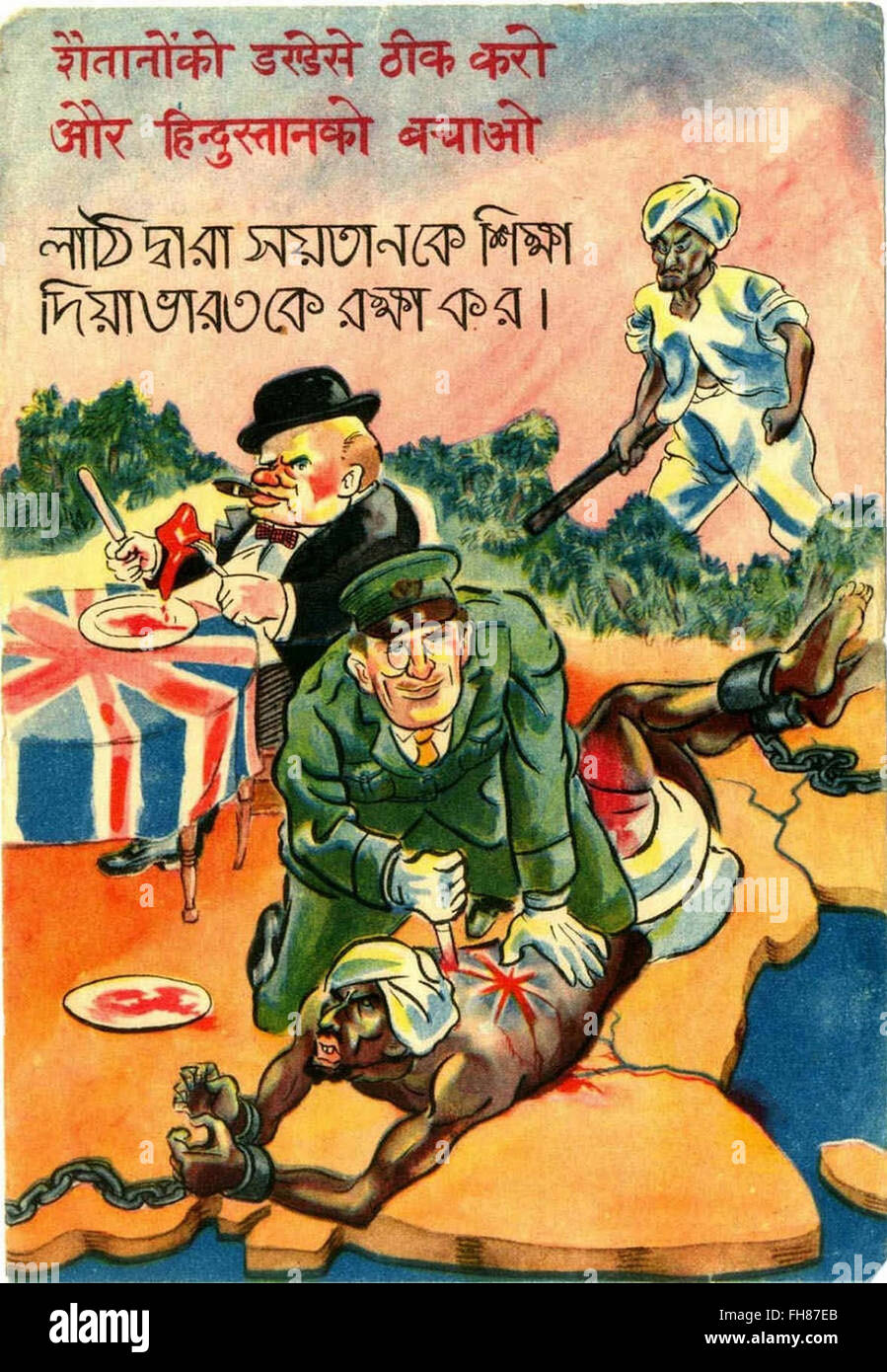
Another Syndicalist poster,this time from Bose's Totalist faction

Bhagat Singh,a leader of the Radical Socialists in the Bharatiya Commune.He was born in Punjab in the northwest,but as an 19-year old,after the formal establishment of the Bharatiya Commune,arrived in the Commune.He became a prominent RadSoc leader,and assembled an army to fight in the Indian Civil War.He died on the battlefield in 1942.
Some more Radsoc leaders-
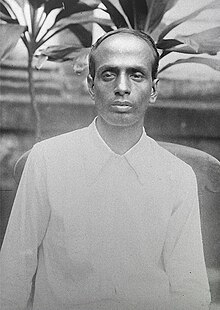
Surya Sen
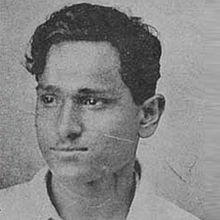
Batukeshwar Dutt

Shivaram Rajguru

Sukhdev Thapar

Chandra Shekhar Azad
Syndicalist poster depicting Britain (Canada) as a warmongering,brutish nation.This was from Nehru's Industrialist faction.

Entente poster from the Indian Civil War

Another Syndicalist poster,this time from Bose's Totalist faction

Bhagat Singh,a leader of the Radical Socialists in the Bharatiya Commune.He was born in Punjab in the northwest,but as an 19-year old,after the formal establishment of the Bharatiya Commune,arrived in the Commune.He became a prominent RadSoc leader,and assembled an army to fight in the Indian Civil War.He died on the battlefield in 1942.
Some more Radsoc leaders-

Surya Sen

Batukeshwar Dutt

Shivaram Rajguru

Sukhdev Thapar

Chandra Shekhar Azad
Anti-Fengtian and Anti-Japanese propoganda in the Republic of China originally the Japanese supported the 2nd Xinhai Revolution in order to drive German hegemony out of not only China but Asia as a whole after the recreation of the Republic of China Japan attempts to offer an alliance with the chinese but the new KMT goverment led by president Soong Ching-Ling (known as the Matriarch of the Republic or Mother of China by the Chinese People) declined stating that there support for the illegitimate in Mukden, economic exploitation in Manchuria, and colonization in Formosa, Korea, and Manchuria made them no different then the German Goliath the APCPS (Japan, Fentiagn, Transamur, Mongolia, Siam, and recently unified Indian Empire) responded with propoganda condeming the KMT goverment "Godless Syndicalists have hijacked the new goverment in south china and we must rescue them from internal doom" and launches Operation Dragon a full scale invaison of the South China which kicks off the 2nd Sino-Japanese war the ROC responds by forming a united front with the Qing, Shanqing, and the Yunnan clique the international community condems Japan calling the invaison "illegal and unjustified" and the ROC recieves support from the Entente and Mittleuropa (mainly Germany, Russia, and the US after the 2ACW) the war last for nearly a decade and ends in a Allied victory after Russia decalres war on the APCPS following the Trans-Siberia incident and the Vladivostok Ultimatum to Transamur
Federalist Propaganda portraying the US support for the Republic of China after the conclusion of the 2ACW after the fall and rape of Nanking support and sympathy toward the Nationalist Goverment increased tenfold when the US sends countless aid to the ROC which ranges from humanitarian aid to heavy equipment including tanks and aircraft along with sending 800,000 troops to China after the US declared war on China for Japan's refusal to return Hawaii to the US

Italians celebrate the Second Unification of Italy in Rome in 1956.
After the end of the Second Weltkrieg in Western Europe, tensions flared between the Kingdom of Italy, consisting of Sardinia, Liguria and Piedmont, the Italian Republic, consisting of Lombardy, Veneto and most of the rest of north-central Italy and the Kingdom of the Two Sicilies. In 1955, the Italian Republic was supported by the Danubian Federation, the Kingdom of Italy was supported by the Commonwealth of Canada, the United Kingdom, the Republic of France, the Republic of Spain and the Kingdom of Portugal, and the Kingdom of the Two Sicilies was supported by the German Empire. In that same year, the Kingdom of Italy and the Kingdom of the Two Sicilies peacefully reunified with the signing of the Treaty of Palermo, with the Kingdom of Two Sicilies as an autonomous kingdom under rule of the Kingdom of Italy. In 1956, the Kingdom of Italy peacefully reunified with the Republic of Italy with the signing of the Treaty of Florence, thus establishing the Italian Federation, a republican federation consisting of numerous semi-autonomous Italian kingdoms, duchies and republics, which was seen as a good compromise between the monarchists and republicans. Thus, in 1956, the Italian Federation had re-unified Italy, 108 years after the start of the First Italian War of Unification. In 1957, the Italian Federation joined the Entente Alliance and the Pan-EuroLatin Mediterranean Economic Pact, much to the chagrin of the German Empire and the Danubian Federation.
Last edited:

Residents of Prauge wave Czech Republican flags in protest of the government of the Danubian Federation and in favor of Czech independence during the Eastern Spring of 1986, a series of peaceful protests throughout the constituent nations of the Danubian Federation. These protests would eventually leave to the dissolution of the Danubian Federation in 1990 after fifty-two years of existence. The successor states of the Danubian Federation were the Kingdom of Austria, the Republic of Hungary, the Republic of Czechia, the Republic of Slovakia, the Republic of Transylvania, the Republic of Slovenia, the Republic of Croatia and the Republic of Bosnia.
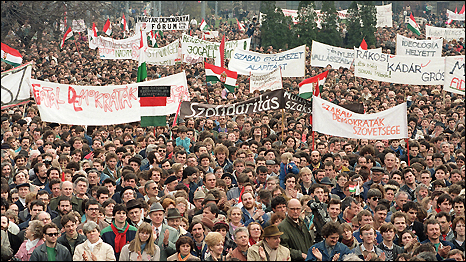
Demonstrations in Budapest in favor of an independent Hungary, 1990.

Croatian nationalist protests in Zagreb, 1990.

Vaclav Havel, the first President of the Republic of Czechia from 1990 to 1998.
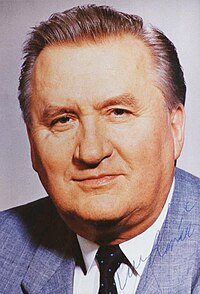
Michal Kováč, the first President of Slovakia from 1990 to 1996.
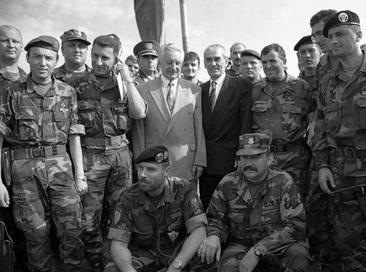
Franjo Tuđman, the first President of the Republic of Croatia from 1990 to his death in 2000, photographed with soldiers of the Croatian Army defending a town in Bosnia from the Bosnian and Serbian armies during the Bosnian War, 1992.

Árpád Göncz, the first President of the Republic of Hungary from 1990 to 1997.
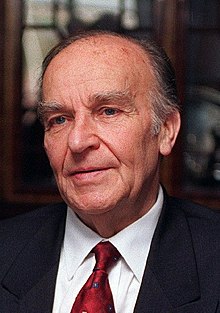
Alija Izetbegović, the first President of the Republic of Bosnia from 1990 to 2001. His presidency saw the turbulent early history of Bosnia, including the Croatian and Serbian invasions of Bosnia, numerous massacres and ethnic cleansings, and the eventual end of the Bosnian War with the help of mediation from the International Congress of Nations (ICN) in 1996.

Janez Stanovnik, the first President of the Republic of Slovenia from 1990 to 1994.
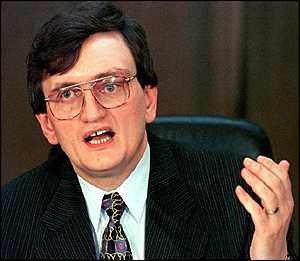
Victor Ciorbea, first President of the Republic of Transylvania from 1990 to 1999.
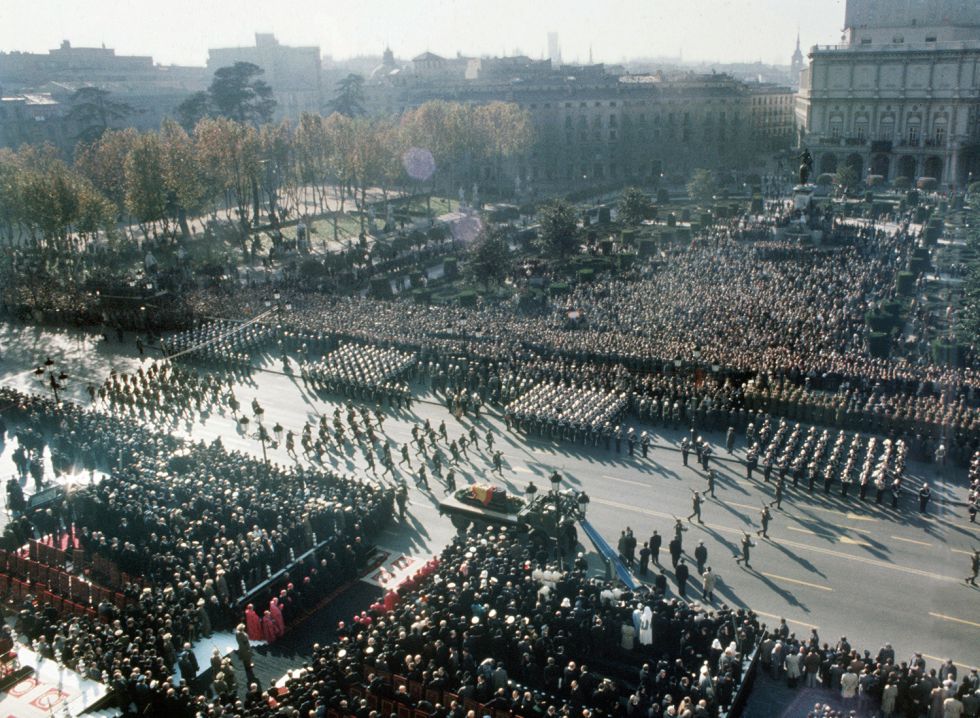
The funeral of King Juan III of Spain in Madrid, Spain on November 20, 1992. After a referendum in 1982 over whether Spain would remain a republic or become a constitutional monarchy, after years of political instability in Spain, the people Spain voted to restore the monarchy, and Infante Juan of Spain, Count of Barcelona, the second-born son of King Alfonso XIII, became the King of Spain. King Juan III would rule Spain until his death in 1992, after which his son became King Juan Carlos I.
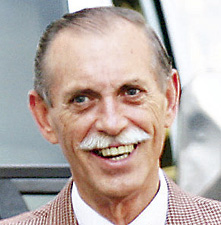
Antonio Semyonovich Krasnov, a former high ranking member of the Brazilian Intelligence Agency (ABIN) during the last decade of the Integralist regime under Caudilho Plínio Salgado, who ruled Integralist Brazil from the death of the first Caudilho Gustavo Barrosso in 1956 until his own death in 1975, after which democracy returned to Brazil in 1976. Born Anatoly Semyonovich Krasnov in Nuremberg, Bavaria, German Empire on February 15, 1946, Krasnov was the grandson of the former leader of the Don-Kuban Union Pyotr Nikolayevich Krasnov, who head been living in Nuremberg ever since Savinkovist Russia took over the Don-Kuban Union in 1939. After Kransov's death in 1950 at the age of 81, his nephew Semyon Krasnov and his own four year-old son Anatoly Krasnov emigrated to Integralist Brazil in an effort to seek a new life and new opportunities. After moving to Sao Paulo, Brazil, Semyon renamed his son from the Russian name Anatoly to the Portuguese name Antonio. Antonio Krasnov served in the infantry of the Brazilian army from 1964 to 1968, after which he joined the ABIN, which during the Intregalist regime was notorious for its persecution, arrest, murder and torture of dissidents, be they totalists, communists, syndicalists, radical socialists, democrats, monarchists, trade unionists, free-masons, Jews or suspected spies. During the early to mid 1970s, Krasnov took part in numerous arrests, disappearings and tortures of dissidents throughout Brazil and would often personally kill dissidents. After the restoration of Democracy to Brazil in 1976 with the election of President Tancredo de Almeida Neves, Antonio Krasnov fled to Bolivia and then to Chile. After years of living in Chile, Krasnov was extradited back to Brazil in 2002. In 2003, he was sentenced to 150 years in prison for crimes against humanity, and he remains imprisoned to this day.
*This is an alternative version of Miguel Krassnoff.
Last edited:
Inspired by Zoidberg12
Meanwhile in Asia and the Pacific

Pro-KMT protesters demostrating in Mukden in favor of unification with Republic of China in October of 1999 against the Japanese Empire which resulted in the Pan-Asian Winter a series of Nationalist protests all across the empire after nearly a century of brutal colonialism and occupation which results in the indpeendence of the Korean Republic, Federal Republic of Vietnam, Kingdom of Laos, Khmer Republic, Kingdom of Siam, Union of Burma, Malayan Commonwealth, Republic of Indonesia, and the 3rd Fillipino Republic along with the unifications of the Fengtian Republic, Kingdom of Hawaii, and the Transamur Republic to China, Russia, and the US respectively

Vietnamese Nationalists protesting in Saigon in favor of independence

Laotian Syndicalists celebrating Laotian indpeendence at the new National Assembly in Vientiane

Members of the Social Republican party protesing in Phnom Penh in favor of Khmer independence

Siamese demonstrators during the 2nd Palace Revolution which resulted in a military back Coup and ousted Pro-Japanese prime minister Prayiy Chan-o-cha

Members of the Young Malaya Movement in Singapore celebrating Malaysia's indpeendence after the Tokyo Declaration in 2002

Indonesian Citizens in Jakatra during the 2nd Indonesian National Revolution

Fillipino citizens during the People's Power Revolution which outsed Pro-Japanese President Rodrigo Duterte in 2001

Korean Nationalists in Seoul wave the taegukgi in protest against the Japanese Empire in favor of Korean independence during the fall of 1999

Members of the Nationalist Wing of the National League of Democracy protesting in Yangon during the 2000 Uprising against Japan's genocide of the Burmese People
Meanwhile in Asia and the Pacific
Pro-KMT protesters demostrating in Mukden in favor of unification with Republic of China in October of 1999 against the Japanese Empire which resulted in the Pan-Asian Winter a series of Nationalist protests all across the empire after nearly a century of brutal colonialism and occupation which results in the indpeendence of the Korean Republic, Federal Republic of Vietnam, Kingdom of Laos, Khmer Republic, Kingdom of Siam, Union of Burma, Malayan Commonwealth, Republic of Indonesia, and the 3rd Fillipino Republic along with the unifications of the Fengtian Republic, Kingdom of Hawaii, and the Transamur Republic to China, Russia, and the US respectively
Vietnamese Nationalists protesting in Saigon in favor of independence
Laotian Syndicalists celebrating Laotian indpeendence at the new National Assembly in Vientiane
Members of the Social Republican party protesing in Phnom Penh in favor of Khmer independence
Siamese demonstrators during the 2nd Palace Revolution which resulted in a military back Coup and ousted Pro-Japanese prime minister Prayiy Chan-o-cha
Members of the Young Malaya Movement in Singapore celebrating Malaysia's indpeendence after the Tokyo Declaration in 2002
Indonesian Citizens in Jakatra during the 2nd Indonesian National Revolution
Fillipino citizens during the People's Power Revolution which outsed Pro-Japanese President Rodrigo Duterte in 2001
Korean Nationalists in Seoul wave the taegukgi in protest against the Japanese Empire in favor of Korean independence during the fall of 1999
Members of the Nationalist Wing of the National League of Democracy protesting in Yangon during the 2000 Uprising against Japan's genocide of the Burmese People
(Had to make another comment due to having more than 10 images)

Pro-Russian protesters welcoming Russian Troops in Vladivostok following Japan's withdraw from Transamur after the Vladivostok Refremendum

Hawaiian Royalists outside of Honolulu during the Hawaiian referendum where 63% voted in favor of rejoining the United States

Pro Federalist Hawaiians celebrating after the Hawaiian Referendum
Pro-Russian protesters welcoming Russian Troops in Vladivostok following Japan's withdraw from Transamur after the Vladivostok Refremendum
Hawaiian Royalists outside of Honolulu during the Hawaiian referendum where 63% voted in favor of rejoining the United States
Pro Federalist Hawaiians celebrating after the Hawaiian Referendum
A small group of AUS exiles pay tribute to their departed leader, Huey Long.
After Atlanta fell to the Red Millitas of the CSA, Huey Long and other key figures of the Union State fled south, eventually washing up in the Domincan Republic. Most of the evacuees remained on the island nation for the remainder of their lives, Long included.
Huey Long, both due his declining health and mental anguish over the American situation, died on September 20th, 1958, eighteen years and seven months into his exile.
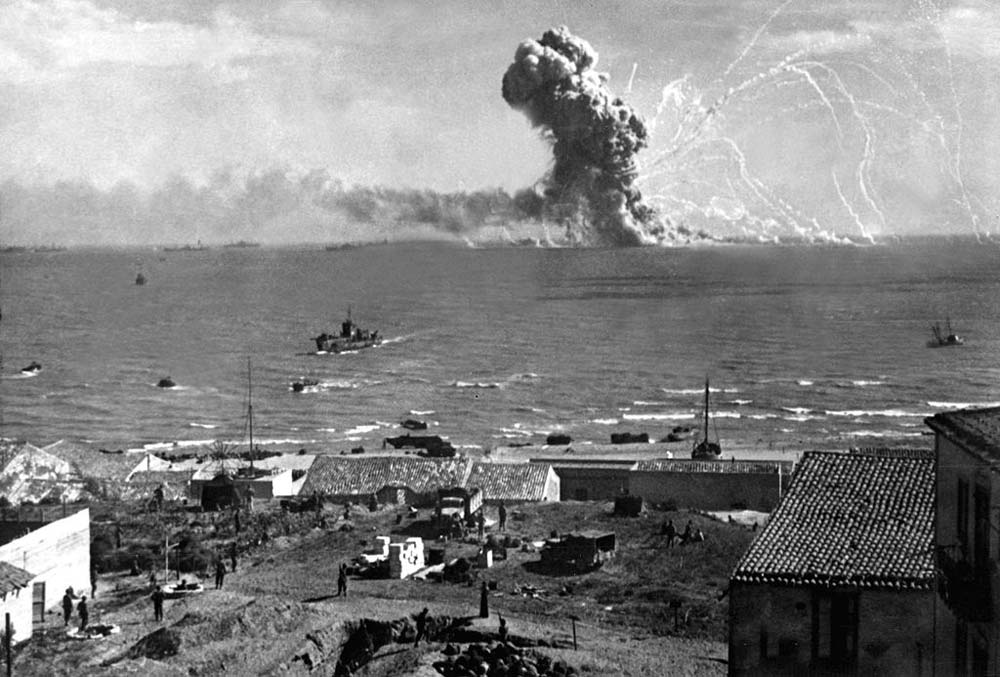
The French Republic naval destroyer Forbin explodes off the coast of Sicily after a encounter with a squadron of Commune submarines, 1943
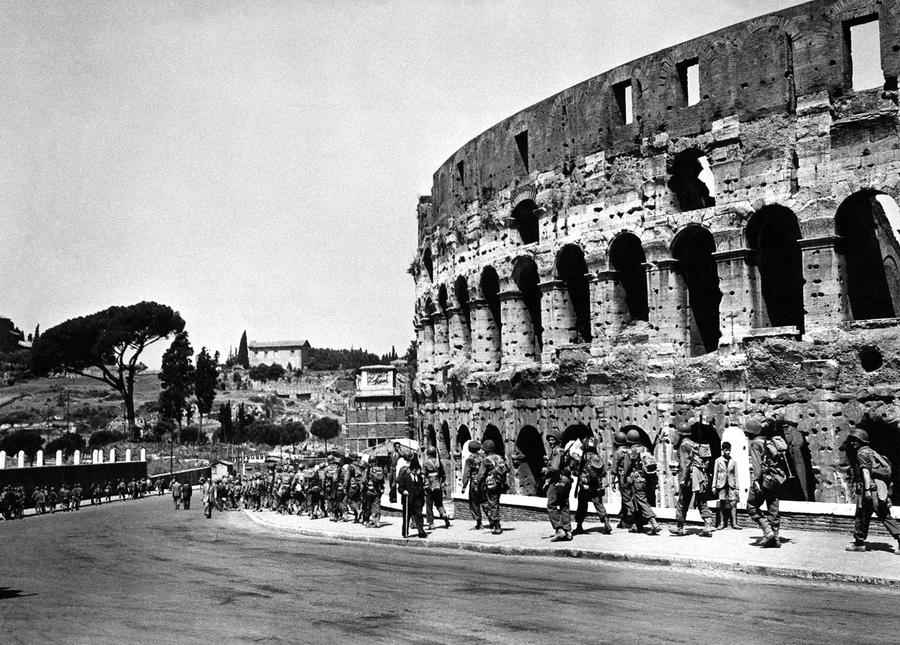
Socialist Italian troops advance through Rome's suburbs on the outbreak of war with the Two Sicilies, 1942

Two Sicilies bomber 'Lucky Lucy' flies over a bombed out Socialist position north of Anzio.

A picture from the Russian comic book series "Batman" about superhero in a bat costume of the American origin, who was forced to leave his country to the Russian Republic as the result of the Syndicalist revolution. Created under the influence of exiled comic writers from the former US, Batman has acquired many Russian traits, including the Cossack outfit similar to those of Field Marshal Pyotr Wrangel, while still faithful to his American roots. After witnessing the death of his parents by the hands of Anarchists in childhood and later living through the Civil War against Syndicalists, Batman swore vengeance against Syndicalists and anyone who thinks himself to be above the law and society.
West Russian infantryman patrolling the Siberian boarder in modern "panzersmench" armor imported from the German Empire.
Note that all photos belong to stagsonwheels on the Paradox Plaza due to their origin in his "Lads on War" AAR for HoI IV:

Winston Churchill, Liberal and 2nd Prime Minister of the restored United Kingdom of Great Banter, handing out reconstruction supplies now that the Onion of Britain and its foul cynicalism had been toppled.

British forces having been deployed to the South African Federation enjoying a break from the lad's tour next to a Nandos opened after the Great Banter-Bantu night out.
Winston Churchill, Liberal and 2nd Prime Minister of the restored United Kingdom of Great Banter, handing out reconstruction supplies now that the Onion of Britain and its foul cynicalism had been toppled.
British forces having been deployed to the South African Federation enjoying a break from the lad's tour next to a Nandos opened after the Great Banter-Bantu night out.
I can't tell if that was a mistake or on purpose...the Onion of Britain
I can't tell if that was a mistake or on purpose...
It was followed by "cynicalism" so maybe, just maybe, the latter.
I mean, the so-called "reconstruction supplies" was beer so something tells me this post wasn't meant to be taken seriously.I can't tell if that was a mistake or on purpose...
Oklahoma, July 1939
"February 1938 began what was known as the 'Federal Collapse'. The last of Federal US forces were cut off and surrounded by both Union State and Syndicate forces. The last standing outfit of Federal Forces, 13th Artillery Brigade, were overrun in Oklahoma in March. With the collapse of federal forces, McCarther was forced to flee to Canada, delivering his famous 'I will return!' speech, promising the restoration of the United States. Once he fled, the remaining federal states declared loyalty to either the American Union State or the Combined Syndicates of America. For those in Syndicate territory, if you were found to be part of 'The Baron Class', meaning before the war you were wealthy enough to avoid problems during the financial collapse, you were arrested and detained till the end of the war. For those in the AUS territory, it was worse. As the AUS forces attempted to seize as much land and resources as possible before counter attacks by the Syndicates, the Minute Men moved in behind as occupation forces. Mostly made up of former KKK and other racist militia forces, these bands of armed strongmen harrassed, beat, and sometimes executed minorities of race and sexuality in exorbitant numbers."- Secondary School History Textbook, Department of Education, Combined Syndicates of America.
Below is a picture of a group of Minute Men looking on as they burn an African American Sharecropper Farm in Oklahoma.
These same men would be captured, executed and hung as warnings during the "Razing of Atlanta".
"February 1938 began what was known as the 'Federal Collapse'. The last of Federal US forces were cut off and surrounded by both Union State and Syndicate forces. The last standing outfit of Federal Forces, 13th Artillery Brigade, were overrun in Oklahoma in March. With the collapse of federal forces, McCarther was forced to flee to Canada, delivering his famous 'I will return!' speech, promising the restoration of the United States. Once he fled, the remaining federal states declared loyalty to either the American Union State or the Combined Syndicates of America. For those in Syndicate territory, if you were found to be part of 'The Baron Class', meaning before the war you were wealthy enough to avoid problems during the financial collapse, you were arrested and detained till the end of the war. For those in the AUS territory, it was worse. As the AUS forces attempted to seize as much land and resources as possible before counter attacks by the Syndicates, the Minute Men moved in behind as occupation forces. Mostly made up of former KKK and other racist militia forces, these bands of armed strongmen harrassed, beat, and sometimes executed minorities of race and sexuality in exorbitant numbers."- Secondary School History Textbook, Department of Education, Combined Syndicates of America.
Below is a picture of a group of Minute Men looking on as they burn an African American Sharecropper Farm in Oklahoma.
These same men would be captured, executed and hung as warnings during the "Razing of Atlanta".
Attachments
Cavalry of the Mongol Empire advancing through a Russian town in Siberia. This photo is probably of the 4th Chahar Mounted Division, who would eventually become the most decorated cavalry division of any power during the Second Weltkrieg, serving from the conquest of the Ma Clique to the capture of Omsk, eventually sending an honour guard from its regiments to be present at the Paris Summit and the subsequent Ural divide of Russia, with the Empire west of the Ural mountains being reformed into the Soviet Union, while east of the Ural's would be absorbed into the Mongol Empire.
Mongol Veteran in Vladivostok, medals indicate his participation in the Russian, Qing and Central Asian campaigns, though his lacking his right arm explains the absence of medals from participation in wars after that point.
Mongol Cavalry near Vladivostok, the city's fall on the 7th of March 1943 marked the end of Japanese allied prescence on the Asian mainland, and the subsequent peace treaty ensured that the Mongol's were able to consolidate their hold before pushing further south into the AOG.
Share:
